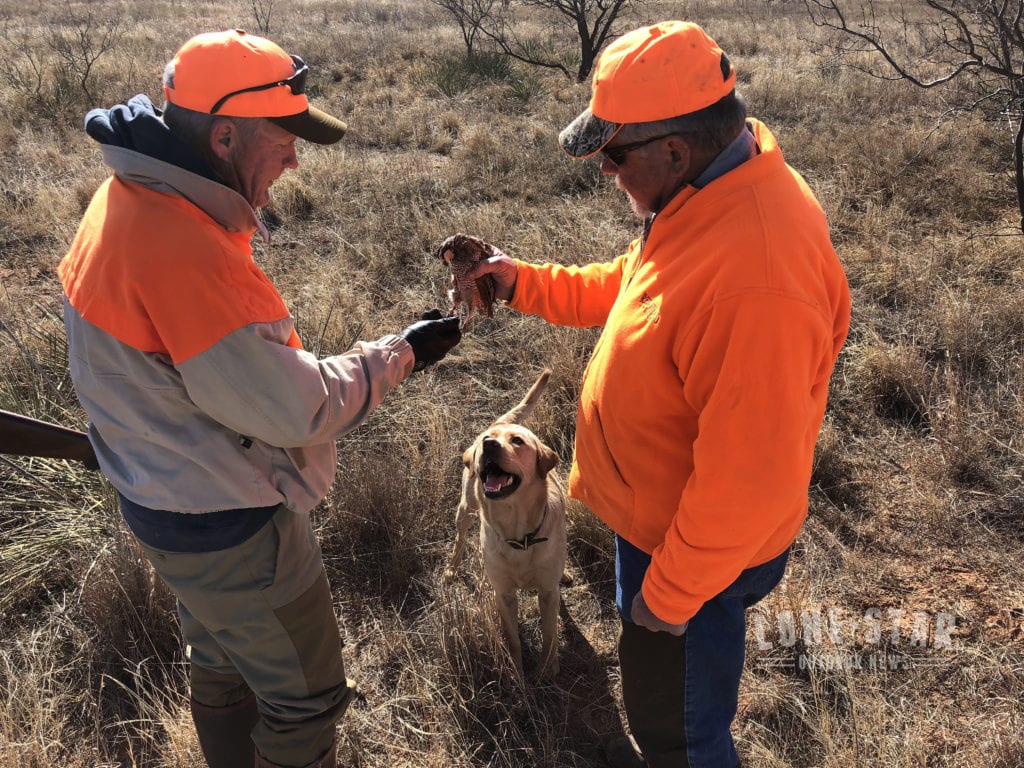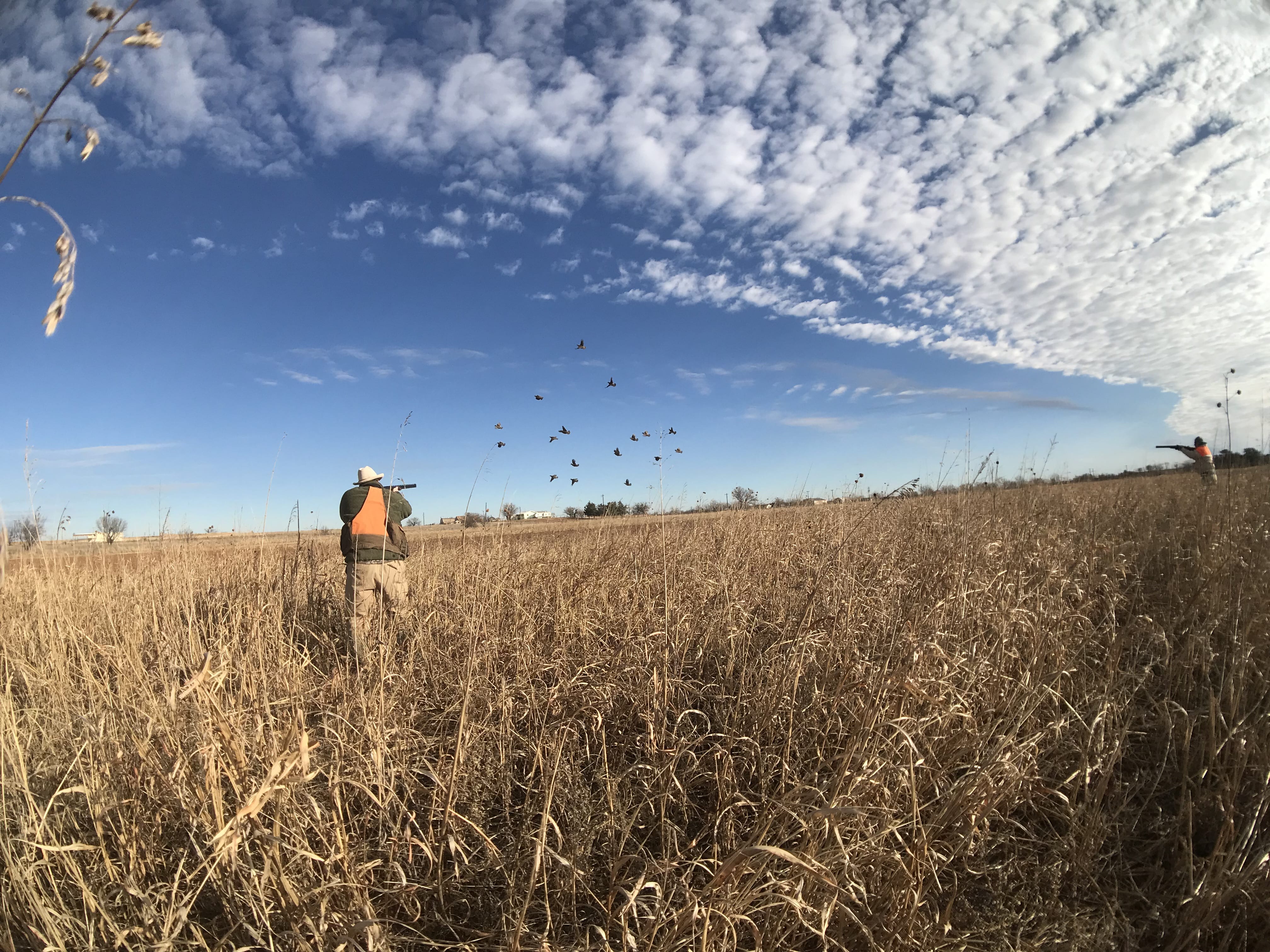Field research through hunting
Photo by Phil Lamb, Rolling Plains Quail Research Foundation
By Craig Nyhus
Lone Star Outdoor News
The covey of bobwhites busted into the air in a blur, after being pointed by two English setters. The shots had to be quick and accurate on a cold and breezy January day at the Rolling Plains Quail Research Ranch in Roby.
When a ranch is managed totally for quail, even when conditions aren’t optimal, remarkable results can be produced.
At the RPQRR, the focus has been quail for more than a decade. All of the habitat manipulation, mesquite and prickly pear removal and prescribed burns are designed to better the odds for quail reproduction and survival.
The brainchild of the ranch’s executive director, Dr. Dale Rollins, with much of the research funding coming from Park Cities Quail and the Rolling Plains Quail Research Foundation, the wild quail are extensively counted, trapped, studied and examined. Research into every aspect of a quail’s life is conducted, from habitat to predators to diseases and parasites.
This particular hunt, one of few hunts conducted at the ranch, was labeled “field research” by Rollins and Ranch Manager Lloyd LaCoste. Lone Star Outdoor News had the privilege to participate in the research, where the numbers of coveys were counted, the birds were examined for bands to determine whether the birds shot had been previously trapped, the birds were aged and examined for disease, injury and eyeworms.
With the assistance of Rollins’ several English setters and hunting in pastures named after former bird dogs on the 4,000-acre ranch, despite 17-degree temperatures, the dogs pointed an astounding 39 coveys during a time when many landowners are asking, “What happened to the quail?”
“The cold might have bothered the hunters, but the dogs didn’t mind it at all,” Rollins said.
LaCoste said the quail numbers are down from last year.
“Last year was crazy,” he said. “This year, nearly all of the birds are adults — there aren’t many juvenile birds.”
Perhaps the age of the bobwhites were a factor, as many of the coveys were jumpy on the cold and windy Tuesday, often flushing out of range of the hunter’s shotguns. Other coveys cooperated better, but still made for difficult shots.
“We look at the bands to determine what percentage of the birds were captured,” LaCoste said. “Last year, about 50 percent of the birds shot were not banded. This year, it’s closer to 10-20 percent.”
The capes also were saved from each harvested bird.
“People wonder, if we had a massive die-off, why don’t we see feathers,” LaCoste said. “We’re going to put the capes out there and see how long they last and what, if anything, makes them disappear.”
Several of the downed birds were examined for eyeworms, and each of them had several. While researchers are working on options to deal with the parasites, including medicated feed, the seriousness of the problem was apparent.
“We have an epidemic breaking out and we are working hard to get our arms around it,” said RPQRF Development Director Phil Lamb, whose goal is to raise millions more for quail research. “In addition to examining quail on the ranch, we have looked at quail or received confirmed eyeworm reports from 10 other counties in Texas and one in Oklahoma.”

Dr. Dale Rollins shows the band on the bobwhite taken at the Rolling Plains Quail Research Ranch. Photo by David J. Sams, Lone Star Outdoor News.


